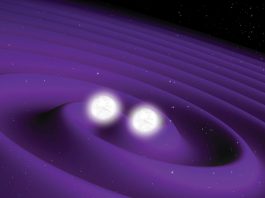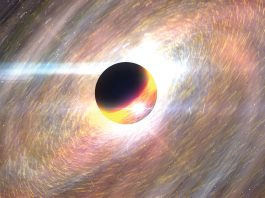An international team of astronomers have discovered the existence of an Earth-like planet orbiting the closest star in the solar system, Proxima Centauri.
As published in Astronomy & Astrophysics, the planet Proxima b has a mass of 1.17 Earth masses and is located in the habitable zone of its star. The discovery of this Earth-like planet was made possible by the innovative ESPRESSO instrument. The Swiss-manufactured spectrograph provides measurements with unprecedented accuracy.
Behind the technology
The ESPRESSO spectrograph has given astronomers radial velocity measurements of the star Proxima Centauri. ESPRESSO enables researchers to take measurements that are three times more precise than that obtained with HARPS, the previous generation of spectrographs.
Francesco Pepe, a professor at University of Geneva and the lead operator of ESPRESSO, said: “We were already very happy with the performance of HARPS, which has been responsible for discovering hundreds of exoplanets over the last 17 years. We’re really pleased that ESPRESSO can produce even better measurements, and it’s gratifying and just reward for the teamwork lasting nearly ten years.”
The measurements taken by ESPRESSO suggest that the minimum mass of Proxima b is 1.17 Earth masses and that it orbits around its star in only 11.2 days. Lead author of the paper, Alejandro Suarez Mascareño, adds: “Confirming the existence of Proxima b was an important task, and it’s one of the most interesting planets known in the solar neighbourhood.”
Nobel Prize winner for Physics in 2019 and the ‘architect’ of all ESPRESSO-type instruments, Michel Mayor, says: “ESPRESSO has made it possible to measure the mass of the planet with a precision of over one-tenth of the mass of Earth. It’s completely unheard of.”
Could Proxima b be habitable?
Proxima b is 20 times closer to its star than our planet to the Sun. It is possible that the surface temperature allows the planet’s water to harbour life.
Although the Earth-like planet is a prime candidate for biomarker research, scientists still need to conduct a lot of research before they confirm that life has been able to develop on its surface. The international team suggests that the Proxima star is an active red dwarf that emits x-rays. The planets that orbit the star receive around 400 times more x-rays than the Earth, which could potentially reduce the likelihood of life developing there.
“Is there an atmosphere that protects the planet from these deadly rays? If this atmosphere exists, does it contain the chemical elements that promote the development of life (oxygen, for example)? How long have these favourable conditions existed?
“We’re going to tackle all these questions, especially with the help of future instruments like the RISTRETTO spectrometer, which we’re going to build specially to detect the light emitted by Proxima b, and HIRES, which will be installed on the future ELT 39 m giant telescope that the European Southern Observatory (ESO) is building in Chile,” said Christophe Lovis, the researcher responsible for the scientific performance and data processing of ESPRESSO.










This was a good thing i wonder what will be the next